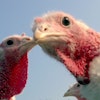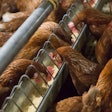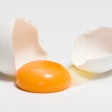
Body development should be of focus during the pullet rearing process to improve layer performance and attain 100 weeks of production.
“Genetic companies are currently investing a lot of resources into extending the length of production for layers,” stated Xabier Arbe Ugalde, H&N International Managing Director, at the 2024 PEAK Conference.
To increase the length of layer production, producers need to create a solid foundation for the birds during the pullet phase, which is highly dependent on achieving the correct body weight at the right time, explained Ugalde.
To achieve the correct body weight, producers should pay attention to management factors, such as nutrition, feeder space and feed intake capacity.
0-4 weeks
During the first four weeks of life, pullets should gain a significant amount of weight in muscle, which will help in proper bone development. To do so, producers should include digestible raw materials and limit byproducts in the diet, he explained.
Feed crumbles will help pullets gain body weight faster, but are more expensive than a mash feed, Ugalde noted. To mitigate cost, producers could use crumbles in the first few weeks of life, due to the criticality of gaining body weight during this time, then switch to mash.
Additionally, feeders should not be placed too close to each other, or pullets will not eat, no matter how nutritious the diet is, and pullet density must be considered to ensure adequate room, he explained.
5-10 weeks
Between approximately five and ten weeks, the pullet’s needs are still high and feed intake grows in importance. Feed intake development should be progressed by teaching pullets to eat the smaller components of the feed, known as the fines. The fines contain amino acids and other healthy components such as sodium, potassium and protein needed for body weight gain.
“Often, layers will be picky when eating and only eat the coarser particles,” he said.
Training for this should start at around five weeks. By six weeks, birds should be consuming the fines daily. Ugalde noted that training is more difficult in cage-free environments because birds can move to different feeders easily to find the coarse particles.
10-18 weeks
At approximately 10 weeks, pullet body weight should continue increasing. This should include an increase in fat content. Specifically, from 11-16 weeks, producers should start preparing layers for start of lay by increasing feed intake to its peak.
According to Ugalde, one way to achieve a higher feed intake is to include fiber in the diet, even at small amounts such as 2%.
18+ weeks
After approximately 18 weeks of age, many changes are occurring in the bird such as hormone fluctuations and the approach of sexual maturity, meaning there is an increase in nutrition needs. Ugalde recommends that calcium be included in the diet during this time to improve egg quality before the first lay.
“Gaining the right amount of weight will tell producers that their feeding program is working well,” he stated.



















